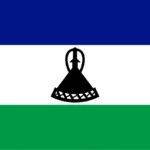
The langur is a type of monkey. There are 15 different subspecies of langurs found in India, Sri Lanka, Burma, Pakistan and Bangladesh. Langurs can survive in different types of ecosystems: hot and humid swamps, dry and ragged scrub, deserts, lowland forests and mountains, and even urban areas. Some subspecies of langur are threatened by habitat loss, chemical pollution, and hunting.
Langurs usually live in the middle and upper canopies of tall trees in thick forests of India, Bhutan, Sri Lanka , Indonesia, Thailand, Vietnam, Cambodia and Laos.
Langurs can reach 17 to 31 inches in height and 11 to 40 pounds in weight. Their tail can be up to 42 inches long. Males are larger than females.
All langurs have excellent sight and hearing.
Body of the langur is covered with long fur that can be silver, grey, brown, golden, red or black. Color of the fur provides a camouflage and it depends on their environment.
Their fur is longish, usually grey, black or brown, and they usually have black faces.
Langurs are also known as “leaf-eating monkeys” because they feed mostly on the leaves. Other than leaves, they also eat fruit, shoots, roots, seeds, flowers, grass.
Langurs are active in the daytime and rarely come down from the trees.
Since langur diet consists of plants only, their intestines are home to different types of bacteria that help in digestion of plant material.
Langurs generally feed in the mornings and late afternoons, and rarely leave the trees.
Plant diet does not provide a lot of energy which is the reason why langurs are not as active as other monkeys.
Like all monkeys, members of a group groom each other.
Leaf monkeys of genus Trachypithecus are also called brow-ridged langurs.
Many langur species have distinctive heads with their long fur coming to a peak on top. Their tails are very long.
Langurs do not drink a lot of water. They absorb water from the food they eat or drink dew and rain collected on the leaves.
The diet of langurs is mostly leaves, but they also eat fruit and flowers in season.
Langurs have excellent eyesight and sense of hearing which help them avoid the predators.
Langurs have large stomachs that have several sections.
Langurs spend one part of their life in the trees, and other on the ground. They can easily jump from one branch to another, or hang from the branch using prehensile tail. They walk quadrupedally (using their front and hind limbs) on the ground.
Most kinds of langur live in groups of one adult male and several females and young.
Langurs are active during the day. They spend the night hidden high in the treetops, along with other members of the group, to avoid predators.
Some kinds of langurs have several males in a troop, organised into an order of importance from highest to lowest, living with females and young.
Langurs live in smaller or bigger groups called “troops”. They usually consist of one male, few females and their offspring. Some troops consist of several males and females of various ages, or only of male members.
Langur troops make loud calls to let other troops know where they are.
Dominance in the group is accomplished through aggressive behavior and fight between males. Fight between different troops is a common phenomenon.
If threatened with danger, the dominant langur, or top, male will confront the danger while the rest of the troop escape.
Langurs communicate using wide variety of sounds: harsh and cough barks, rumble screams, grunts, honks, rumbles and hiccups.
Langurs play an important role in helping the forests in which they live regenerate because they eat seeds and by the time the seeds come out in their poo, they are far away from the trees the seeds came from.
The most dominant male in the troop has opportunity to mate with females. Pregnancy in females lasts around seven months. Female usually gives birth to a single baby every two years.
Females langurs usually give birth every 2 years, about 7 months after mating with a male. Twins are rare.
Babies are tightly associated with their mothers during the first 13 to 20 months of their life. Males will leave the troop after that period to join some other troop.
Young male langurs leave the group before they are fully adult, and travel to find a group they can join.
Lifespan of a langur is around 20 years in the wild.








